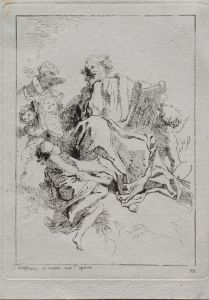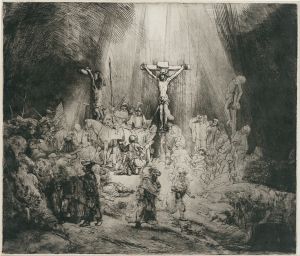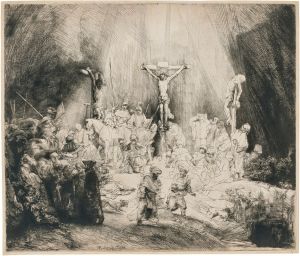
St Peter
A hand-painted replica of Rembrandt van Rijn’s masterpiece St Peter, meticulously crafted by professional artists to capture the true essence of the original. Each piece is created with museum-quality canvas and rare mineral pigments, carefully painted by experienced artists with delicate brushstrokes and rich, layered colors to perfectly recreate the texture of the original artwork. Unlike machine-printed reproductions, this hand-painted version brings the painting to life, infused with the artist’s emotions and skill in every stroke. Whether for personal collection or home decoration, it instantly elevates the artistic atmosphere of any space.
Rembrandt van Rijn, one of the most renowned artists of the Dutch Golden Age, is celebrated for his masterful use of light and shadow, as well as his profound ability to capture human emotion. Among his extensive body of work, Rembrandt created several paintings and etchings depicting biblical figures, including St. Peter. However, there is no specific painting titled "St Peter" by Rembrandt that is widely recognized or documented in major art historical references.
Rembrandt's interest in biblical subjects is well-documented, and he often explored themes from the New Testament, which included figures like St. Peter. St. Peter, one of the twelve apostles of Jesus, is a significant figure in Christian theology, often depicted in art with keys, symbolizing his role as the keeper of the gates of Heaven. Rembrandt's works frequently reflect his deep engagement with biblical narratives, capturing the complexity and humanity of these figures.
In Rembrandt's oeuvre, there are several works where St. Peter appears, either as a central figure or as part of a larger composition. One notable example is the painting "The Denial of St. Peter," created in 1660. This painting illustrates the moment when Peter denies knowing Jesus, a story found in the Gospels. Rembrandt's interpretation of this scene is marked by his characteristic use of chiaroscuro, the dramatic interplay of light and shadow, which highlights the emotional tension of the moment. The expressions on the faces of the figures convey a deep sense of conflict and remorse, showcasing Rembrandt's skill in portraying psychological depth.
Another significant work is the etching titled "St. Peter Kneeling," which depicts the apostle in a moment of prayer or penitence. This etching is a testament to Rembrandt's ability to convey spiritual introspection and humility through minimalistic yet powerful compositions. The use of etching allowed Rembrandt to experiment with fine lines and intricate details, capturing the essence of St. Peter's character with subtlety and grace.
Rembrandt's depictions of St. Peter, like many of his religious works, are not just illustrations of biblical stories but are also reflections on human nature, faith, and redemption. His ability to imbue these scenes with emotional depth and realism has contributed to his enduring legacy as one of history's greatest artists.
While specific details about a painting solely titled "St Peter" by Rembrandt are not available, his broader body of work includes significant representations of the apostle, each contributing to our understanding of Rembrandt's artistic vision and his interpretation of biblical themes. These works continue to be studied and admired for their technical mastery and their profound exploration of the human condition.


















